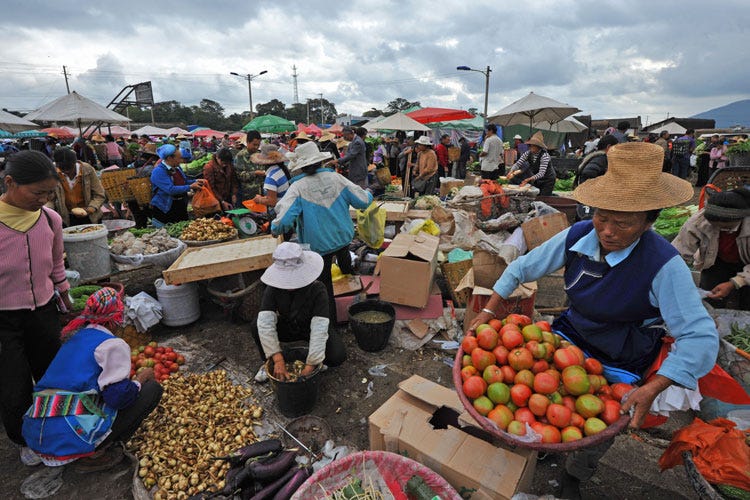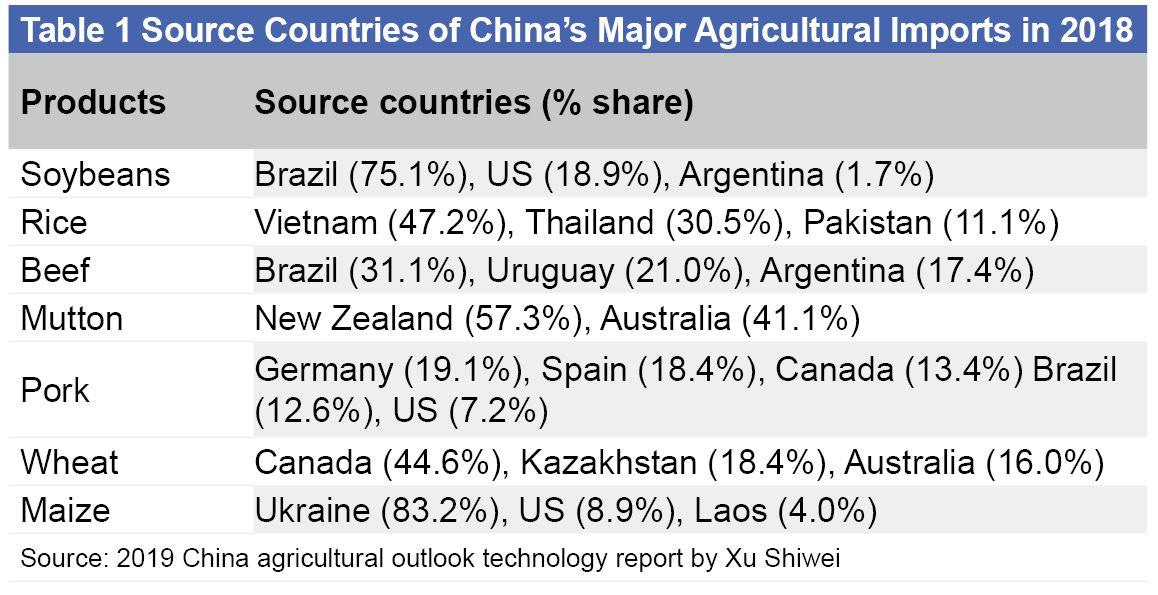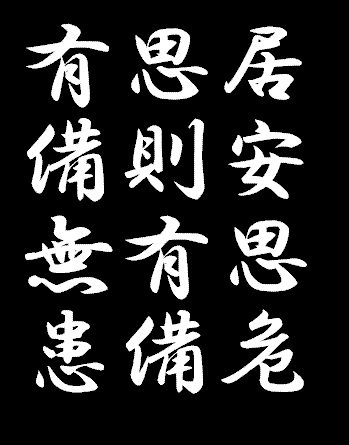
The new coronavirus pandemic continues to spread around the world, seriously affecting global food supply chain. A recent United Nations research report warned that 25 countries will face severe famine risk this year, and the earth may experience the worst food crisis in 50 years.
Affected by the pandemic, many grain exporting countries, such as Russia, Vietnam, and Kazakhstan, have recently issued grain export bans. As the world’s largest rice exporter; India’s exports have also stalled due to the “closed country”, which has led to a sharp drop in rice exports. In the current global food crisis, is there enough food in our country? Is my country's food supply secured?

"Global food shortage" struck
The global food crisis has arrived. On July 13, the five major United Nations agencies released the 2020 "State of Food Security and Nutrition in the World". The figures released are disturbing: 690 million people (about one-tenth of the total population) are currently hungry in the world. It has increased by 10 million in one year and 60 million in five years. By the end of this year, the epidemic may increase the number of chronically hungry by 130 million people. This does not rule out the possibility of further increase.

Just two days later, the United Nations issued an early warning: a total of 25 countries are facing severe hunger risks, and the world is on the verge of the worst food crisis in at least 50 years!
This is not alarmist! In Kenya’s largest slum, thousands of people flocked there for food assistance, causing a brief stampede. In the chaos, people beat each other with sticks, some had masks on their chins, and some fell and were trampled on by the crowd.
In Congo, Venezuela, South Sudan, Haiti and other countries, people experience long and painful deaths due to hunger at all times. In India, workers earning daily wages lined up to receive food, and millions of migrant workers who were unemployed due to the epidemic blockade are struggling for food.
To many people's surprise, the United States also has a sense of food crisis. According to data from the US Department of Agriculture, in 2018, approximately 11% of American households are already in a state of "food insecurity". The latest research from the University of Arkansas in the United States shows that in some states in the United States, nearly half of the respondents reported that the new crown pneumonia pandemic threatened food safety.
In China’s per capita grain occupancy is close to 500 kilograms, exceeding the international food security standard.
The data is sufficient to explain the current food security situation in China. At present, China's grain production is at a historical high. According to data released by the National Bureau of Statistics, the total national grain output in 2019 was 663.84 million tons, an increase of 5.94 million tons over 2018, an increase of 0.9%, a record high.
Not only last year, but this year's summer grain harvest has also been set. According to the estimation of the National Bureau of Statistics of the main summer grain production areas and the key surveys on non-main production areas, the total national summer grain output in 2020 is 285.6 billion catties, an increase of 2.42 billion catties from 2019, an increase of 0.9%, and a record high (figure 1).
Calculating further forward, since 2004, China's grain production has been increasing for many consecutive years. In 2008, grain output exceeded the highest level in history for the first time, reaching 1,057.0 billion catties; in 2015, it reached 1,242.9 billion catties, an increase of 44.3% over 2003. At the end of the "Twelfth Five-Year Plan" period, the national self-sufficiency rate for the three major grains of rice, wheat, and corn has remained above 98%, and the per capita share of grain has reached 450 kg, which is higher than the international food security standard of 400 kg per capita.
In the past five years, China country's grain harvest has been more stable. China’s total grain output exceeds 1.3 trillion catties each year, and the per capita grain occupancy is close to 500 kilograms, which clearly exceeds the world average.

However, the sudden new coronavirus pandemic this year has increased the uncertainty of China’s food supply chain. In this regard, Li Guoxiang, director of the Agricultural Products Market and Trade Research Office of the Rural Institute of the Chinese Academy of Social Sciences, said, “Despite the impact of the new crown pneumonia epidemic, Chinese residents in the first half of the year Grain consumer prices rose by only 1%. China’s grain prices are stable, which fully proves that China’s grain supply is sufficient to cope with market fluctuations under various circumstances. At present, China’s stock of grain can be used by residents across the country for more than one year."
Another bumper harvest of summer grains this year has laid the foundation for stabilizing the first half of the year’s grain production; however, with the arrival of floods in the southern flood season, will there be a “destructive reduction in production and no harvest” in some areas, which will affect the entire year’s grain production. The impact of production safety is quite worrying.
At a regular briefing held by the Information Office of the State Council on July 13, Zheng Guoguang, Secretary-General of the National Disaster Reduction Commission and Deputy Minister of Emergency Management, stated that as of 7 a.m. on July 13, floods have caused direct economic losses of 86.16 billion yuan. . More than 2 million people need to be resettled in emergency, and the area of farmland with no harvest is 516,000 hectares.
Jiangxi was greatly affected by floods. The 6th press conference held by the Jiangxi Provincial Flood Control and Drought Relief Headquarters on July 21 released data showing that since July, as of the 22nd, the province’s agricultural and rural areas have caused direct economic losses of 10.07 billion yuan due to floods, and the affected area was 13.169 million. mu. Among them, 587,000 mu of high-standard farmland engineering facilities in the province were flooded, accounting for 2.3% of the built-up area, and the estimated loss was about 1.26 billion yuan. In addition, the current flood season coincided with the critical period of early rice harvesting, which also caused serious damage to early rice in the province.
Based on this, some agricultural experts believe that the impact of floods on food production is relatively large, and even devastating. In areas with severe floods, there will be no harvests, and some areas may experience reduced production.
Regarding whether the floods sweeping the south will affect my country’s food security, Li Guoxiang is not worried. He told the reporter of China Economic Weekly, “This year’s floods are mainly affected by the Yangtze River Basin. They are Heilongjiang, Henan and Jilin. Jiangxi is one of the 13 main grain producing areas in my country. Although the floods will be greatly affected and the grain output will be reduced, it will not affect the overall food security of the country."
He also said that autumn grain is the bulk of the annual grain production, accounting for about three-quarters of the annual grain output, and some difficulties may be encountered. "However, it should be noted that many years of high-standard farmland construction and other measures have effectively improved the ability to resist disasters and risks. This year, the area of autumn grain has increased steadily, and the crops in the field are growing well. The autumn grain production is likely to have another bumper harvest, which will further consolidate food security. basis."
No Food Crisis in China? - How China Mitigate
With just over one months to go before the US 2020 presidential election and with Trump lagging behind his Democrat opponent in public opinion polls, president Trump is willing to do everything and anything to stay in power. To divert attention from his disastrous performance in managing the Covid-19 pandemic, Trump is stepping up efforts to hammer China and anyone else he can lay his hands on. Under his favourite disguise of national security, Trump issued executive orders on 5 Aug that will effectively ban two major Chinese apps from the US market. The order calls for a complete halt of all US transactions with TikTok and WeChat’s parent companies by 20 Sep 2020. On 14 Aug, Taiwan formally signed an agreement to buy 66 of the latest F-16 jets from the US, the first such deal since 1992. More aggressive attacks from the US are expected to come in the days leading up to the US presidential election day on 3 Nov.
Amidst the relentless attacks from the United States, president Xi Jinping call for a stop to food wastage last week, describing the phenomenon in the country as shocking and distressing may not sound as trivial as it looks on the surface. According to official numbers, Chinese consumers in big cities wasted 17 to 18 mln tonnes of food served in 2015 – enough to feed 30 to 50 mln people for a year. Vegetables, rice and noodles, as well as meat were four main sources of food waste. Each consumer threw away 93 grams of food per meal, while more food was wasted or thrown out at school cafeterias and large restaurants. Xi urged the people to have a sense of crisis about food security. Xi’s warning has received swift responses from various stakeholders. New laws could be drawn up to enhance monitoring the habit of food consumption in the country and punish food wastage. China’s catering association, chain store association, hotel association, etc in the country’s 31 provinces have launched a campaign to stop food waste and cultivate frugality. Some of the proposals to help curb food wastage are:
Restaurants to serve half portion of set meal at half price;
Restaurants to offer incentives for customers to finish up their food and provide packing services for leftover foods;
Restaurant workers to remind customers not to over order;
Introducing the N-1 model, where group diners must order one portion less than the number of diners. They are allowed to order more only if the food served are not enough;
Collecting anti-wastage deposit, whereby customers are to pay certain amount of deposit when dining in restaurants and the deposit can only be redeemed if there is no food wastage;
Forbidding livestreaming of extravagant meals and food wastage activities in social media.
Within days after Xi’s call for frugality, Haidilao hotpot introduced a half-portion menu. Quanjude came out with a one-person portion menu for its Peking duck. Many restaurants have adopted the N-1 model and implemented a reward/punish system on food wastage. Such large scale and speed in implementing Xi’s directive is remarkable. While it reflects the efficiency of China’s government system, the urgency also causes certain people to wonder if China is suffering from a food crisis.
Although China is the world’s third largest country by area, she has only 7% of the world’s arable land and her available water supply per person is only 25% of the world’s average. Yet, China needs to feed 20% of the world’s population. The worry of an impending food crisis stems from the impact of the Covid-19 pandemic disrupting the food supply chain and the severe floods in Southern China. The acceleration in the rise of food prices over the last few months has compounded the trepidation.
Well, attaining food security has always been of utmost importance to China for obvious reasons. In order to achieve this top priority goal, the Chinese government has introduced multiple measures to enhance the country’s grain production capacity. These included programmes to improve soil conditions and quality, strictly maintaining the 1.8 bln mu (120 mln hectares) threshold of cultivated land, imposing policy to protect agricultural water resources, greatly improving infrastructure in the rural areas, institutional reforms to improve the returns of farmers, increasing mechanisation, and technological progress. As a result, despite rapid industrialisation and urbanisation, China has managed to maintain her grain planted area while greatly increasing her grain output. In fact, this year’s summer grain harvest rose 0.9% from 2019 to yet another record high of 143 mln tonnes.
China’s food imports have risen sharply over the years. Although China has largely achieved self-sufficiency for grains to feed her 1.4 bln population, she needs to import about 100 mln tonnes of soybeans per year to feed farm-raised animals. Soybeans are by far China’s largest agricultural imports. She is also the world’s top importer of meat and dairy products. Table 1 shows the source countries for China’s major agricultural imports in 2018. As shown, China relies very little on the US for her food imports. China imports primarily from Latin American countries, Australia, and New Zealand.

Apart from diversifying her import sources, China has also been actively buying agricultural production capacity overseas in recent years. According to China’s Ministry of Agriculture, overseas agricultural investments by Chinese companies, in some 100 countries, totalled US$26 bln as of 2016. According to Land Matrix, an independent land ownership monitoring consortium, China has acquired 6.6 mln hectares of land around the world over the past 15 years alongside the strategic acquisitions of companies such as Smithfield Foods, a meat processing company in the US and Swiss agrochemical company, Syngenta.
That said, given the rising geopolitical tension due to a desperate Trump administration and the continuing Covid-19 crisis, particularly in Latin America, it is prudent to prepare the country’s citizens for a potential food shortage arising from import disruption. The Xi Jinping government is putting into practice an age-old Chinese adage: “when in safety, think of danger; when there is thinking, there is preparation; when there is preparation, there will not be trouble ”.

Next issue, I would wrap up the commodity boom series -did USD really weakening?



